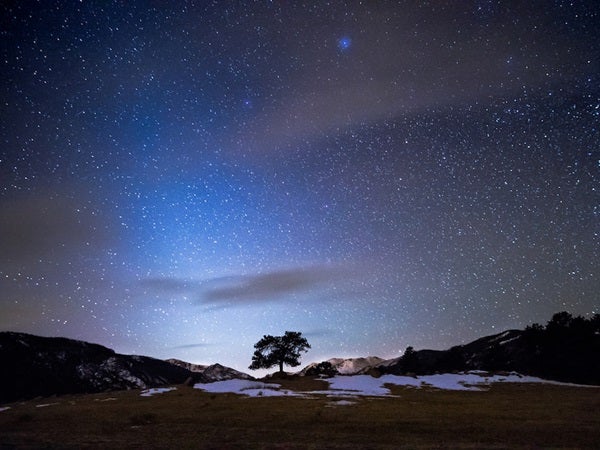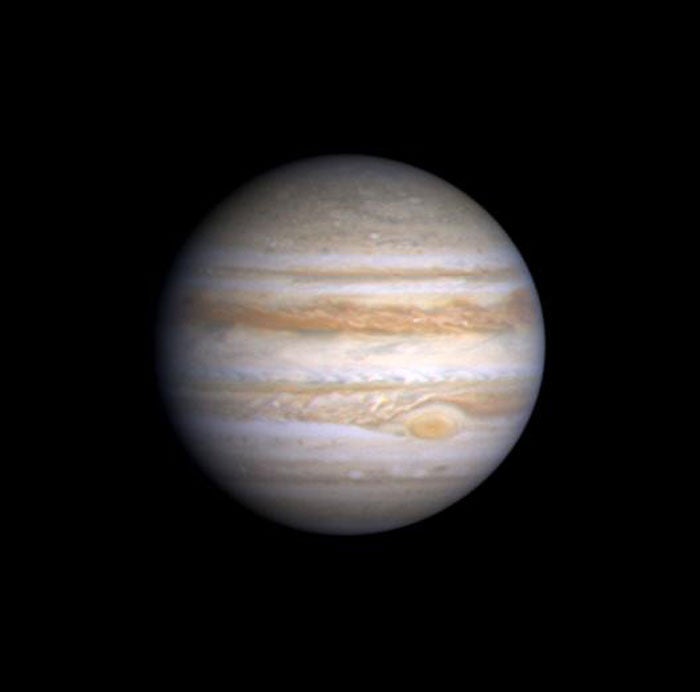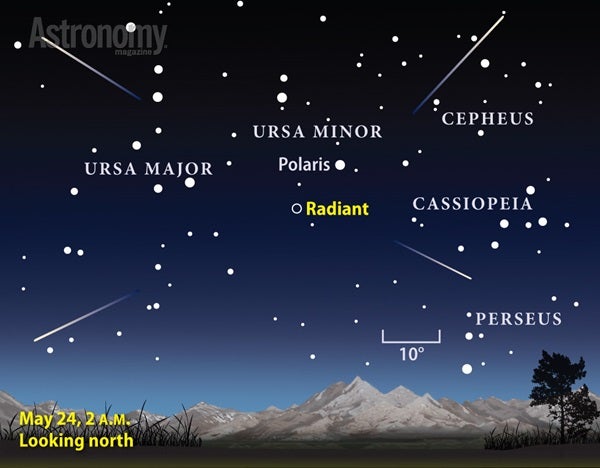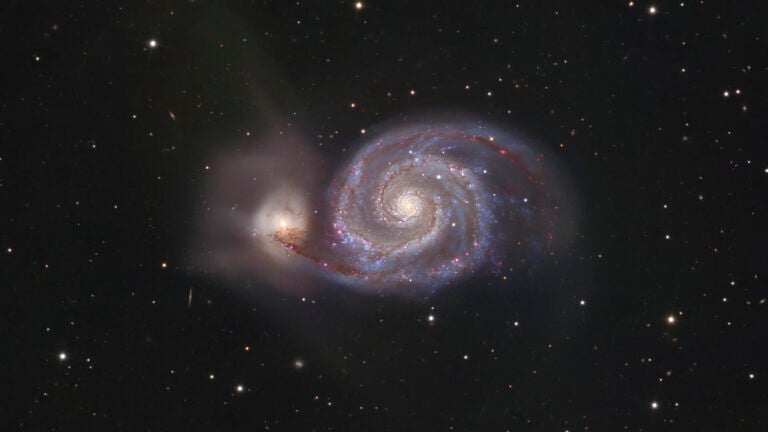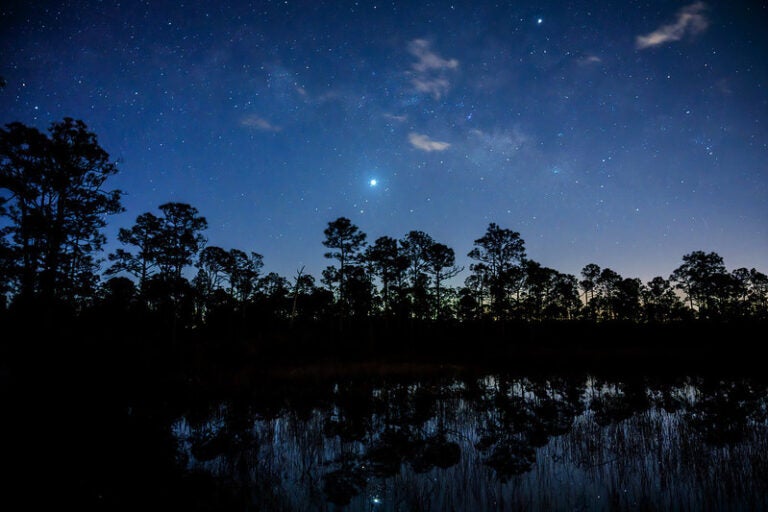Tonight should provide your first good opportunity of 2018 to view the zodiacal light. From the Northern Hemisphere, late winter and early spring are the best times of year to observe this elusive glow after sunset. It appears slightly fainter than the Milky Way, so you’ll need a clear moonless sky and an observing site located far from the city. With the waning gibbous Moon now exiting the early evening sky, the next two weeks will be prime viewing times. Look for the cone-shaped glow, which has a broad base and points nearly straight up from the western horizon, after the last vestiges of twilight have faded away.
For those who believe in folklore, the fate of winter rests on the shoulders of the groundhog. If the furry rodent sticks his head out of his burrow this morning and sees his shadow, we’ll have six more weeks of winter. But if the weather is cloudy, it means spring is right around the corner. What does this have to do with astronomy? Groundhog Day celebrates one of the four so-called cross-quarter days, which mark the midpoints between the solstices and equinoxes. February 2 falls approximately midway between the winter solstice and the vernal equinox.
Saturday, February 3
Comet PANSTARRS (C/2016 R2) currently glows around 10th magnitude, which makes it a tempting target through telescopes for those under a dark sky. What makes it even more tempting is its location in Taurus: The comet spends February’s first week just 2° east of the stunning Pleiades star cluster (M45). Look for a small, round, diffuse glow similar to a companion galaxy in the Virgo Cluster.
Sunday, February 4
The variable star Algol in Perseus reaches minimum brightness at 8:19 p.m. EST, when it shines at magnitude 3.4. If you start viewing as soon as darkness falls, you can watch it more than triple in brightness (to magnitude 2.1) over the course of about five hours. This eclipsing binary star runs through a cycle from minimum to maximum and back every 2.87 days. Algol appears nearly overhead after sunset and sinks low in the northwest well after midnight.
Head outside before dawn and you can’t miss Jupiter. The giant planet rises shortly after 1 a.m. local time and climbs 30° high in the south by the time twilight commences. Jupiter shines at magnitude –2.0, which makes it the brightest point of light in the night sky, and resides among the much dimmer stars of the constellation Libra. A telescope reveals the planet’s 36″-diameter disk.
Tuesday, February 6
Mars follows close on the heels of Jupiter these winter mornings. The magnitude 1.1 Red Planet rises around 2:30 a.m. local time and appears 25° high as twilight starts to paint the sky. It currently lies against the backdrop of northern Scorpius. Unfortunately, the view of Mars through a telescope proves disappointing — its disk spans only 6″ and shows no detail.
Wednesday, February 7
Last Quarter Moon occurs at 10:54 a.m. EST. The half-lit orb rises around 12:30 a.m. local time and appears high in the south as twilight begins. The Moon lies in the constellation Libra the Balance, just 4° to the upper right of brilliant Jupiter. The two will make a pretty pair throughout the morning hours.
Thursday, February 8
The waning crescent Moon stands midway between Mars and Jupiter this morning. Although the trio are too far apart to appear in a single binocular field of view, the scene will look spectacular to the naked eye.
Mars officially crosses the border from Scorpius into Ophiuchus this morning. Although the planet spent just eight days within the confines of the Scorpion, it will remain in the Serpent-bearer for more than a month.
For those of you in the Southern Hemisphere, today marks the peak of the annual Alpha Centaurid meteor shower. And with the Moon a waning crescent, it won’t shed much unwanted light into the morning sky. The shower’s radiant — the point from which the meteors appear to originate — lies among the background stars of Centaurus (although, oddly enough, closer to 1st-magnitude Beta [β] Centauri than to its brighter neighbor, Alpha [α] Centauri). The shower typically produces about 6 meteors per hour at its peak, although observers have reported between 20 and 30 per hour in a couple of years. The meteors tend to be bright and often leave persistent trains.
One of the sky’s largest asterisms — a recognizable pattern of stars separate from a constellation’s form — occupies center stage on February evenings. To trace the so-called Winter Hexagon, start with southern Orion’s luminary, Rigel. From there, the hexagon makes a clockwise loop. The second stop is brilliant Sirius in Canis Major. Next, pick up Procyon in the faint constellation Canis Minor, then the twins Castor and Pollux in Gemini, followed by Capella in Auriga, Aldebaran in Taurus, and finally back to Rigel.
Saturday, February 10
Mars passes 5° due north of Antares this morning. Although the Red Planet officially lies in the southwestern corner of the constellation Ophiuchus, it appears in a single binocular field with Scorpius’ brightest star. Because both Mars and Antares shine at magnitude 1.1, this is a perfect opportunity to compare the colors of the two objects, and come to understand why ancient observers named the star Antares, which literally means “rival of Mars.”
Sunday, February 11
The waning crescent Moon appears 2° above Saturn this morning. The two rise shortly after 4 a.m. local time and climb some 10° above the southeastern horizon by the time twilight starts. The planet shines at magnitude 0.6 and appears significantly brighter than any of the background stars in its host constellation, Sagittarius the Archer.
The Moon reaches apogee, the farthest point in its orbit around Earth, at 9:16 a.m. EST. It then lies 252,090 miles (405,700 kilometers) from Earth’s center.

